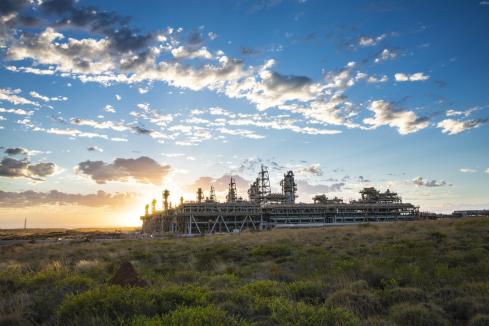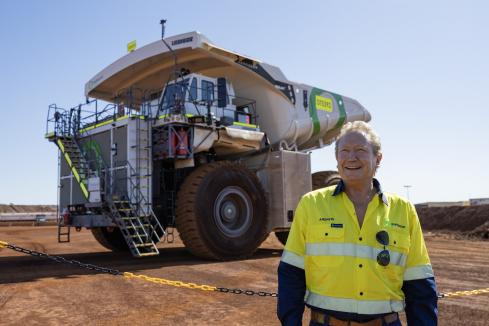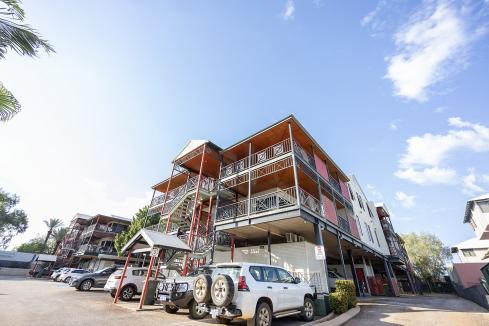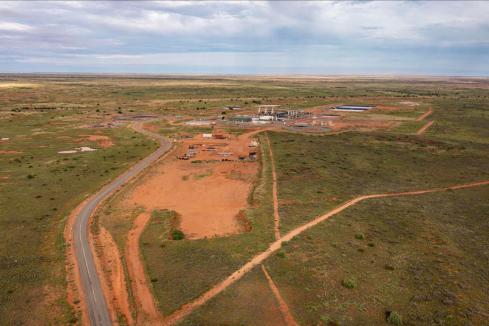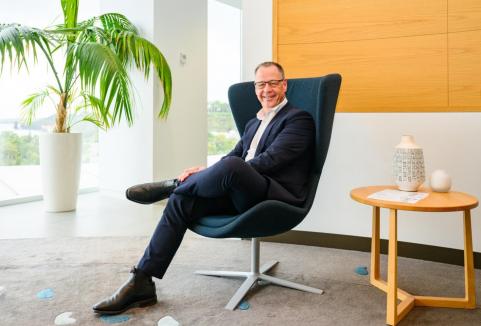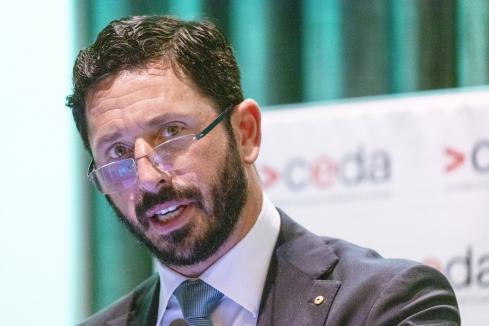Decisions on two big gas projects are due, $12 billion of chemical projects are under consideration, and a decommissioning timebomb awaits.

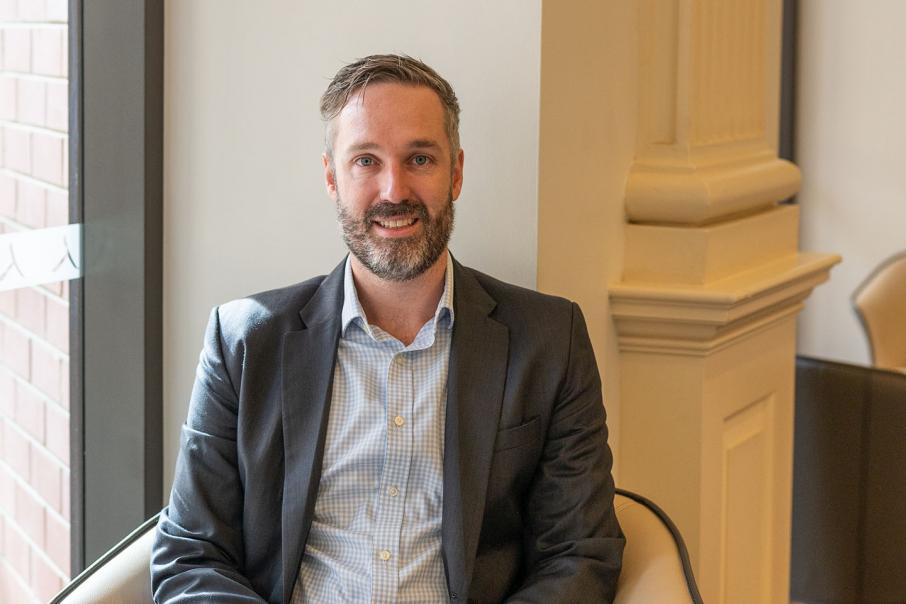
There would have been some grim faces among Western Australia’s oil and gas workforce one particular April morning last year.
Of the many difficult moments faced by the industry at the height of the COVID-19 crisis, perhaps none stands out more than that on April 20 (US time), when the price of futures contracts for West Texas Intermediate oil fell below minus $37 a barrel.
Global supply had been boosted by government-owned oil producers, demand had been crippled by lockdowns, and the US was reportedly running out of storage space for oil. It was later revealed that aggressive futures trading had also significantly affected the price.
(see a PDF version of this special report)
Only weeks earlier, Woodside Petroleum had trimmed its spending by 50 per cent and deferred a decision on two major projects.
In July, the business was forced to write-down asset values by $US3.9 billion because of the low oil price.
How rapidly the mood can change.
At the time of writing, West Texas crude was changing hands for $US60.50/barrel.
LNG prices, which are most relevant to WA, spiked.
From a low of $2.29 per gigajoule in July 2020, the Australian netback price lifted to $19.60/GJ in February 2021, according to data from the Australian Competition and Consumer Commission.
Spot prices have since retreated, but forward prices are averaging more than $7/GJ for the next two years, ACCC data shows.
In the next 12 months, two large final investment decisions are on the horizon, for Santos’s Barossa and Woodside’s Scarborough-Pluto project.
They would follow more than $1 billion of final investment decisions over summer, which comprised Mitsui and Beach Energy’s Waitsia stage two project in the Perth Basin, and Santos’s Bayu-Undan infill in the Timor Sea.
Many of these projects share a common theme: it’s about capacity utilisation at existing LNG processing plants.
Only the Scarborough to Pluto development is likely to include construction of a new liquefaction train.
Waitsia’s owners have a swap deal to market gas through the existing North West Shelf Karratha plant and replace its domestic gas reservation requirements, while the Bayu-Undan infill will temporarily keep Santos’s Darwin LNG plant humming until Barossa is finalised.

Wood Mackenzie senior analyst Daniel Toleman told Business News the two major final investment decisions to watch in the local market this year would be Scarborough and Barossa.
A green light for Barossa is expected in April.
“The Darwin LNG facility will be empty otherwise,” Mr Toleman said.
“Santos has done a lot of work to optimise that project.
“Barossa is an attractive project going into existing infrastructure, it’s competitive on the global scale.”
Until that project is built, gas from three Bayu-Undan wells will be processed through Darwin LNG.
Santos signed a 10-year, 1.5 million tonne per annum contract in December with Mitsubishi to offtake Barossa gas.
For Woodside, there have been two recent contracts that will support Scarborough.
Trading house Uniper asked to double its offtake to be 1mtpa from 2021 to 2025 and then 2mtpa from 2026, while RWE Supply and Trading GmbH will buy 840,000tpa from 2025.
Mr Toleman said he expected a final commercial agreement between Woodside and BHP in April or May, with a final investment decision targeted for the second half of the year.
BHP owns 26.5 per cent of two offshore Scarborough titles, with Woodside holding the remainder.
Woodside chief executive Peter Coleman told investors in February that the company had used 2020 to sharpen the value proposition, increasing planned offshore capacity by 20 per cent to 8mtpa.
For the North West Shelf, the Waitsia deal will help keep processing trains online and avoid a huge excess capacity forming at the plant.
Woodside said in a November briefing that North West Shelf would be offshore constrained, or not have enough incoming gas to run at full capacity, by 2022.
If Waitsia had not proceeded, the company would have needed to shut train 3 at Karratha by 2024.
Projections showed as much as 50 per cent of the Karratha capacity would have been available by 2028, with contracts under negotiation at the time and gas from Scarborough potentially filling half of that.
Construction of the long-awaited Browse LNG project in a tieback to Karratha would be the base case solution, Mr Toleman said.
With a final investment decision in 2024, the project would be ready for startup by 2030.
There are alternatives to Browse, he said, though none was yet a frontrunner.
They could be Western Gas’s Equus, Chevron’s Clio and Acme, another Perth Basin project, or gas from the Canning Basin.
The state government last year announced it would disallow exporting of onshore gas, while allowing an exemption for Waitsia.
Mr Toleman said it was possible a further large onshore project may be granted an exemption, although it would not be easy.
Strike Energy has flagged a final investment decision on West Erregulla in the first half of this year, and the company may move into downstream chemical processing through its Project Haber.
In the near term, the major final investment decisions looming in 2021 will create opportunities for contractors after a quiet year.
Woodside’s forward work plan filed in September shows about 23 packages expected to go out to tender, mostly for Scarborough.
Those include four tenders through Bechtel for Pluto train 2, for security, protective clothing, and non-destructive testing.
Shell listed 14 packages in its plans, while Chevron had only one to open this year.
Among the few tender winners in the past 12 months was DOF Subsea, which will be providing offshore services to Chevron.
For Santos’s Barossa, Subsea 7 will install subsea umbilicals, risers and flowlines, while Aker Solutions will supply umbilicals and National Oilwell Varco Denmark I/S the risers.
Upstream Production Solutions was given a $144 million contract by the federal government to manage the Northern Endeavour floating oil facility, after owner Northern Oil and Gas Australia was placed in liquidation.
MMA Offshore has subcontracted to provide a vessel for Upstream.

Deals
Woodside and Chevron both have asset sales on the radar.
Chevron announced it would explore the sale of its 16.7 per cent share of the North West Shelf operations, with potential buyers rumoured to include Beach Energy, Global Infrastructure Partners, Canada Pension Plan and Investment Board, and Woodside.
In Woodside’s case, buying a larger share of North West Shelf could help get Browse across the line, because it will make alignment between partners much easier.
In December, Shell sold a 26.25 per cent slice of the Queensland Curtis LNG common-user facilities to Global Infrastructure Partners in a $US2.5 billion deal.
Mr Toleman said Shell and BP, which each hold a one sixth slice of North West Shelf, may seek to reduce their stakes in the future as they transition their portfolios to focus more on decarbonisation.
Woodside has signalled it could sell down its share of Pluto train 2 to about 50 per cent and has been testing the market to dilute its interest in the Scarborough upstream resource.
An improvement in market conditions in recent months had helped make a sale more attractive, Woodside told investors.
What next?
A decision on Santos’s Dorado oil development, off the Pilbara coast, is expected next year.
Front-end engineering and design work is to begin in the first half of 2021.
Santos also indicated it would consider a later, second, phase at Dorado, which would involve gas production.
Western Gas has partnered with APA Group to assess a potential transcontinental gas pipeline linking its Equus project to the east coast, an investment forecast to cost $3.5 billion.
APA has also committed to a $460 million MidWest interconnector pipeline linking the main Dampier Bunbury line to the Goldfields line.
Kato Energy, a partnership of Hydra Energy, Tamarind and Skye Energy, has lodged documents with regulators for small, short-term developments at the Amulet, Talisman and Corowa fields in the Carnarvon Basin.
Drilling at Corowa will get under way late in 2021 if all goes to plan.
Onshore, there were notable moves in the Canning Basin.
Origin Energy signed a $35 million farm-in deal with Buru Energy and Rey Resources for seven tenements, planned with two wells.
Origin general manager of integrated gas Mark Schubert said the gas resources were strong and the fields had carbon capture and storage potential.
In addition, the acreage would give an option to supply gas for LNG backfill, he said.
Bennett Resources, owned by US company Black Mountain Metals, has lodged environmental documents for up to 20 wells in the basin.
That could signal a renaissance in the basin, which is in the Kimberley.
The basin is estimated to have 225 trillion cubic feet of gas, but its remote location has previously impaired developments.
Downstream, four businesses are hoping to construct chemicals projects, worth about $12 billion combined.
Derby Fertilizer and Petrochemical Complex would use Canning Basin gas from Theia Energy for a $4.5 billion project.
A more advanced plan is Perdaman’s $4.5 billion Burrup urea plant, where a final investment decision is due mid year.
A joint venture of Clough and Saipem has been selected for engineering and construction, while Woodside has signed on to supply gas.
Coogee had been considering a $1 billion methanol plant in the Burrup, which had faced challenges securing gas, while Strike Energy revealed a $2.3 billion fertiliser plant called Project Haber earlier this year.
Strike’s move was particularly illustrative of the potential.
The company’s board includes resources executive Nev Power and Perth dealmaker John Poynton.
Chief executive Stuart Nicholls touted downstream processing as a way to unlock more value from natural resources.
Beyond construction and operation, end-of-life management is of growing importance.
Northern Endeavour’s challenge has highlighted the expected surge in decommissioning work across the industry in the next decade, with the government confirming in December it would decommission the platform.
Woodside formerly owned that floating production operation, but sold it in 2016 when it was nearing the end of its life.
Separately, the offshore oil and gas regulator started a compliance action against Woodside for decommissioning issues at Enfield’s Nganhurra FPSO.
An inspector from the National Offshore Petroleum Safety and Environmental Management Authority had issued an improvement notice in October 2019.
A 2017 document by the state government suggests 600 fields in the Asia Pacific will reach the end of their lives in the following decade.
Deloitte has said decommissioning in Australia could cost $US21 billion over 50 years.
That means sealing up wells, removing and towing equipment, and environmental remediation.
It also means big bills for projects that reach the end of their operating lives, and a threat to the social licence of the industry if the process is not done effectively.




















